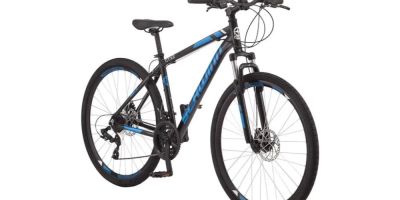- 1-Understanding-Gravel-Road-Bikes-For-Mixed-Terrain
- 2-Key-Features-Of-Gravel-Road-Bikes
- 3-Benefits-Of-Gravel-Bikes-On-Varied-Surfaces
- 4-How-To-Choose-The-Right-Gravel-Bike
- 5-Real-World-Examples-And-Rider-Stories
- 6-Maintenance-Tips-For-Gravel-Road-Bikes
- 7-Healthy-Cycling-Recommendations
1. Understanding Gravel Road Bikes for Mixed Terrain
Gravel road bikes for mixed terrain have surged in popularity among cycling enthusiasts who crave versatility and adventure. Designed to perform well on a variety of surfaces—from paved roads to gravel paths and light trails—these bikes bridge the gap between road bikes and mountain bikes. Their adaptability makes them ideal for riders who want to explore diverse landscapes without switching bikes.
The concept of mixed terrain cycling requires a bike that offers comfort, durability, and control. Gravel bikes typically feature wider tires, relaxed geometry, and robust frames to handle rougher surfaces while maintaining speed and efficiency on smoother roads.

Mike's Bikes of Berkeley
1824 University Ave, Berkeley, CA 94703, USA
1.1 The Rise of Gravel Riding
In recent years, gravel riding has become a distinct cycling category, inspiring events, races, and community rides focused on exploring backroads and lesser-known trails. This trend reflects a growing desire among cyclists to blend fitness, exploration, and nature appreciation.

Mike's Bikes of Berkeley
1824 University Ave, Berkeley, CA 94703, USA
2. Key Features of Gravel Road Bikes
Several defining features make gravel road bikes suitable for mixed terrain:
- Wider Tires: Typically 35mm to 45mm, offering better traction and comfort over uneven surfaces.
- Frame Geometry: More relaxed than traditional road bikes, promoting stability and comfort on long rides.
- Robust Frame Materials: Aluminum, carbon, or steel frames balance strength with weight for durability and performance.
- Multiple Mounts: For racks, fenders, and extra water bottles, making them perfect for bikepacking and longer tours.
- Disc Brakes: Providing reliable stopping power in variable weather and terrain conditions.
These components together enable riders to confidently tackle gravel, dirt, pavement, and even some singletrack trails.
3. Benefits of Gravel Bikes on Varied Surfaces
Gravel road bikes excel in providing a smooth, stable ride across mixed terrain, making them versatile machines for recreational cyclists and serious adventurers alike. Their wider tires absorb shocks better than narrow road tires, reducing fatigue during long rides. Enhanced stability improves control on loose gravel or wet surfaces, increasing rider confidence.
Additionally, their endurance-oriented geometry allows cyclists to maintain comfortable positions over extended periods, crucial for multi-day trips or long training rides. Many riders appreciate how gravel bikes enable seamless transitions between paved roads and off-road paths, unlocking access to hidden routes and scenic adventures.
3.1 Expanding Your Riding Horizons
By investing in a gravel bike, riders can explore trails and backroads that would be challenging or unsafe on traditional road bikes. This opens opportunities for cross-training, nature exploration, and social rides in diverse environments, enriching the overall cycling experience.
4. How to Choose the Right Gravel Bike for You
Selecting the best gravel road bike for mixed terrain depends on your riding style, terrain preferences, and budget. Consider the following factors:
- Intended Use: Commuting, long-distance touring, racing, or casual exploration.
- Frame Material: Carbon for lightweight performance, aluminum for affordability, steel for comfort and durability.
- Tire Clearance: Ensure sufficient room for wider tires suited to your typical terrain.
- Component Groupset: Quality gears and brakes impact reliability and maintenance.
- Fit and Comfort: Professional bike fitting is recommended for optimal performance and injury prevention.
Test rides and expert advice help narrow down options. Remember that investing in a versatile gravel bike pays off through years of enjoyable, varied riding.
5. Real-World Examples and Rider Stories
Many riders share inspiring stories about how switching to gravel road bikes for mixed terrain transformed their cycling adventures. Take Sarah, a weekend warrior who swapped her road bike for a gravel bike and discovered nearby forest trails and dirt roads she never knew existed. The increased comfort and stability allowed her to extend her rides and explore nature more deeply.
Similarly, John, an endurance cyclist, praises his gravel bike’s durability during a multi-day bikepacking trip where the terrain varied from smooth asphalt to rocky paths. His experience highlights how a well-chosen gravel bike can handle diverse challenges without compromising speed or comfort.
6. Maintenance Tips for Gravel Road Bikes
Gravel riding exposes bikes to dirt, dust, and moisture, necessitating diligent maintenance. Regular cleaning of the drivetrain, frequent tire pressure checks, and inspection of brake pads keep your bike performing optimally. Lubricating the chain after rides and ensuring proper wheel alignment prolong component life and enhance safety.
Investing in durable tires suited to mixed terrain reduces punctures and improves ride quality. Keeping spares and repair kits during rides ensures you can handle minor issues on the trail.
7. Healthy Cycling Recommendations
For those interested in gravel road bikes for mixed terrain, Healthy Cycling offers expert recommendations on models, accessories, and maintenance products tailored to diverse cycling needs. Whether you’re a beginner or experienced rider, Healthy Cycling helps you find the perfect bike to explore new terrains confidently.
Explore Healthy Cycling to discover detailed bike reviews, buying guides, and tips for enhancing your cycling lifestyle. Embrace the freedom and excitement that gravel riding brings with the right equipment and support.










